Connecting Hasura to a Railway Postgres Database
Introduction
This guide explains how to connect a new or existing Railway Postgres database to a Hasura instance, either on Hasura Cloud or via one of our self-hosted solutions. If you're exploring Railway Postgres and are interested in migrating an existing Postgres database - such as from Heroku - check out their docs before continuing below.
If you plan on using Hasura Cloud, which we recommend, follow steps 1 and 2 below. If you're self-hosting a Hasura instance and already have a project running, skip to step 3.
Step 1: Sign up or log in to Hasura Cloud
Navigate to Hasura Cloud and sign up or log in.
Step 2: Create a Hasura Cloud project
On the Hasura Cloud dashboard, create a new project:
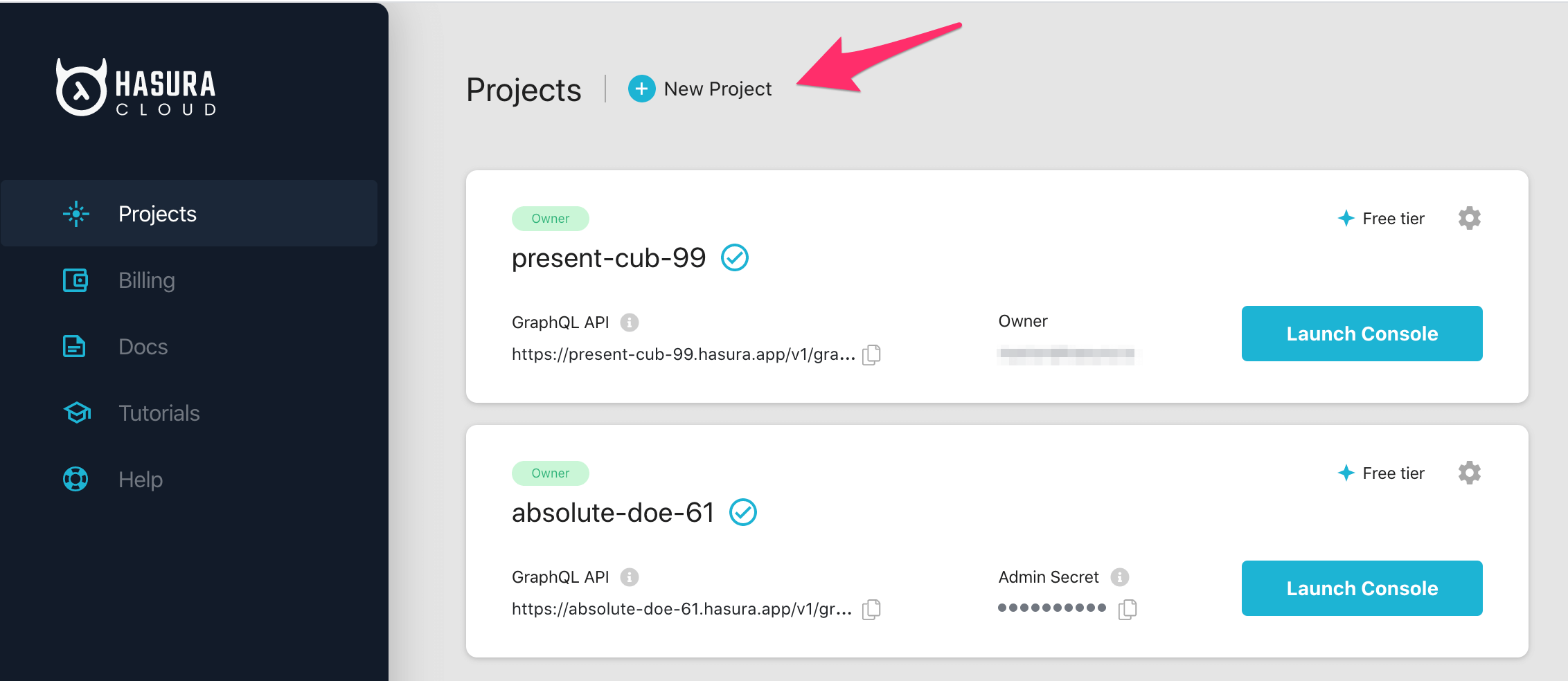
After the project is initialized successfully, click on Launch Console to open the Hasura Console in your browser.
On the Hasura Console, navigate to the Data tab and choose Connect Existing Database. Hasura will prompt you for a
Postgres Database URL. We'll create this in the next step and then come back here.
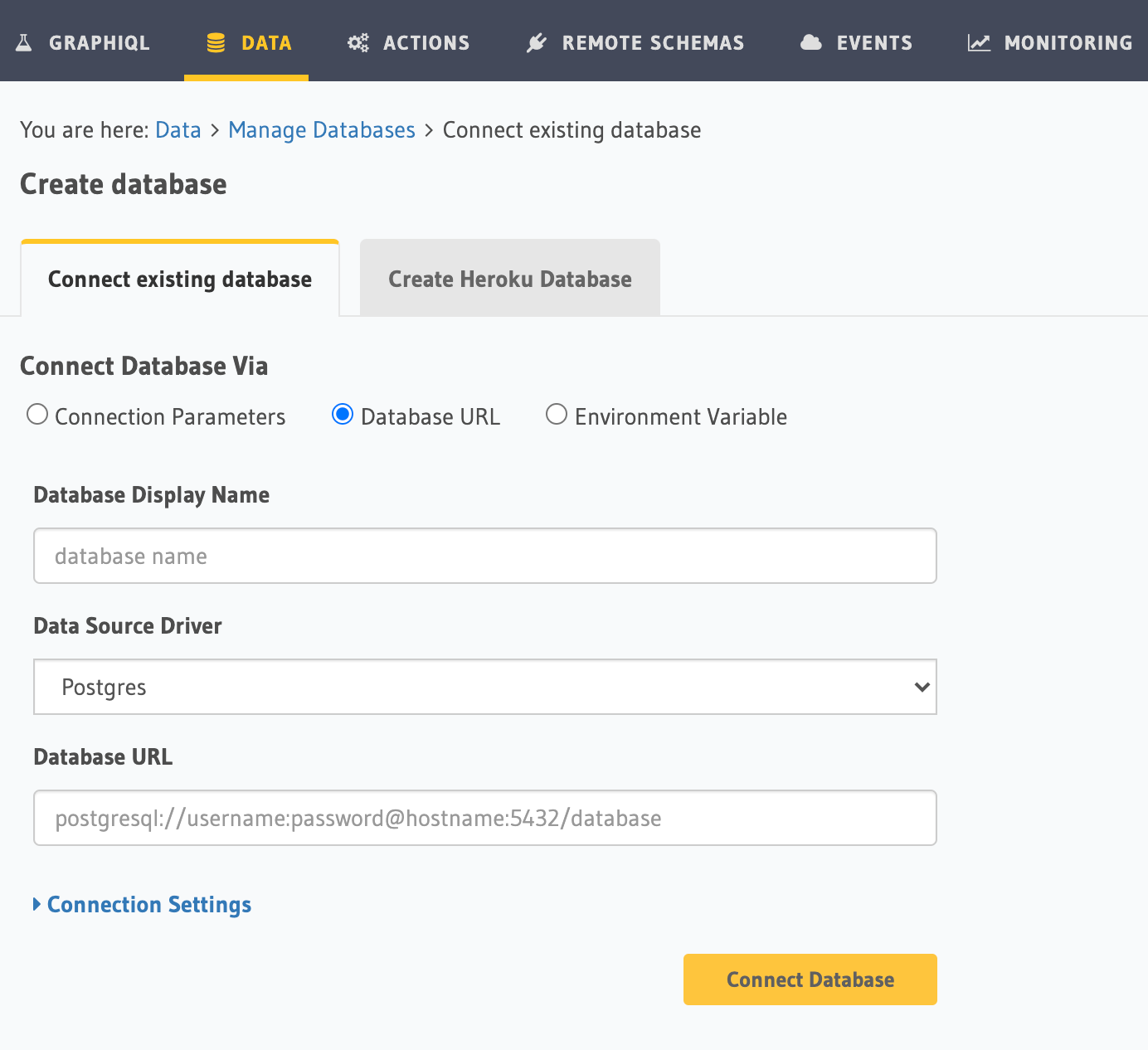
Step 3: Create a Postgres DB on Railway
Log into Railway.
From your dashboard, click New Project:
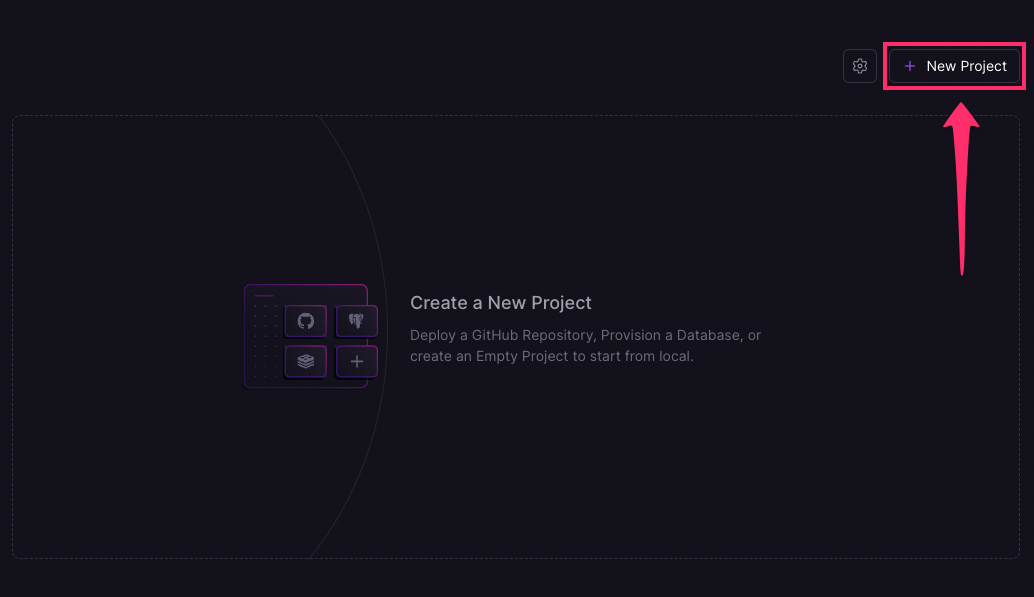
Select Provision PostgreSQL:
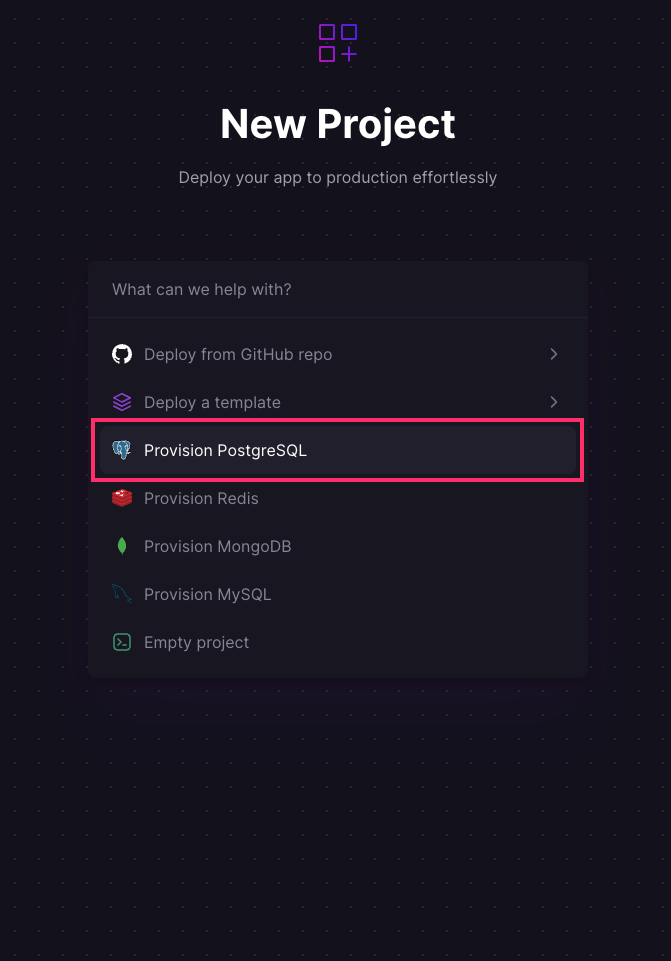
Railway will redirect you to the project's dashboard. After a few seconds, you should see the Activity card update
with information about your new instance. Congratulations! You've now created a Postgres instance on Railway which you
can use with Hasura GraphQL Engine. Follow the steps below to connect it to Hasura.
Step 4: Get the database connection URL
The structure of the database connection URL looks as follows:
postgresql://<user-name>:<password>@<host-server>:<port>/<database-name>
Click on the PostgreSQL card to see details related to this instance.
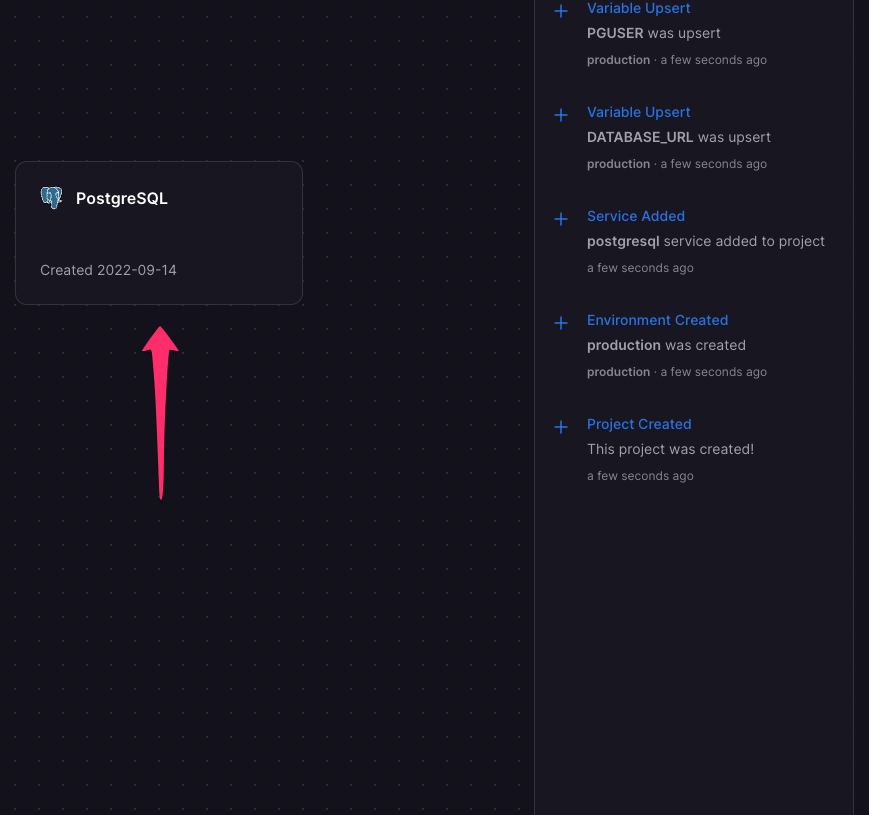
Choose the Connect tab and copy the Postgres Connection URL:
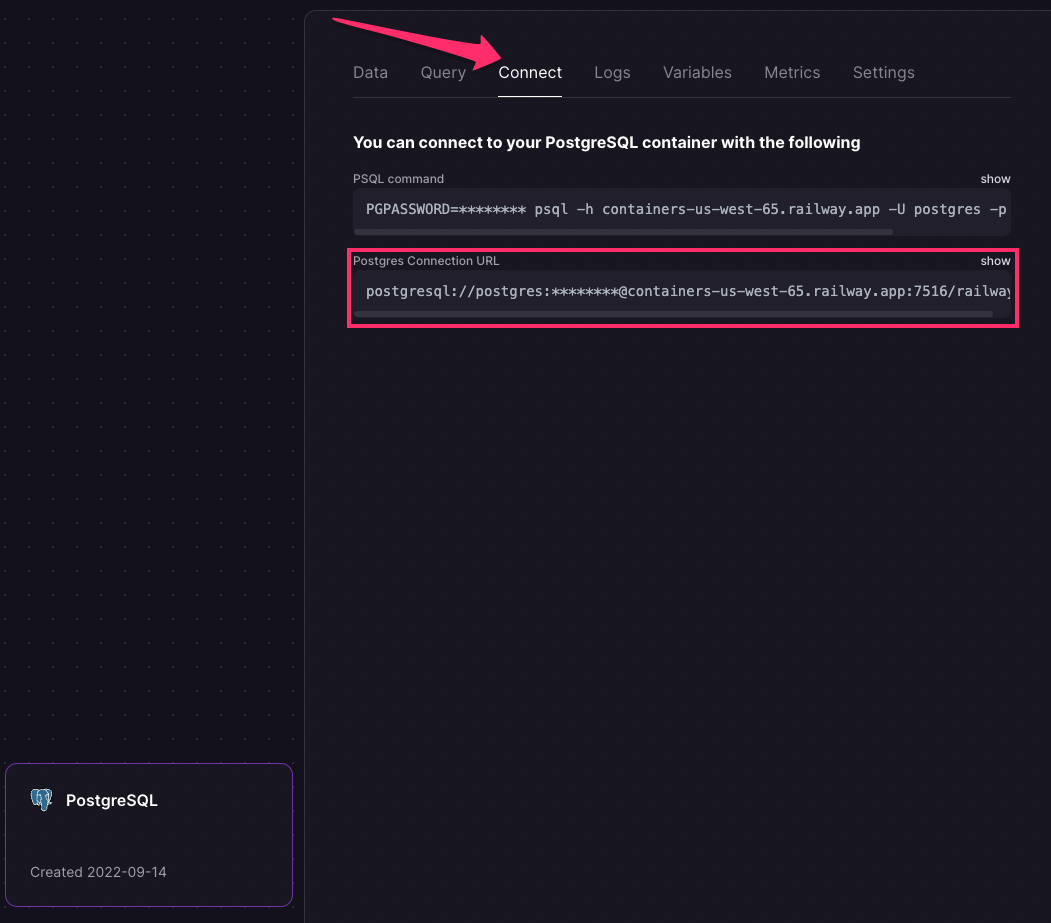
Step 5: Finish connecting the database
Back on the Hasura Console, enter the database URL that we retrieved in the previous step:
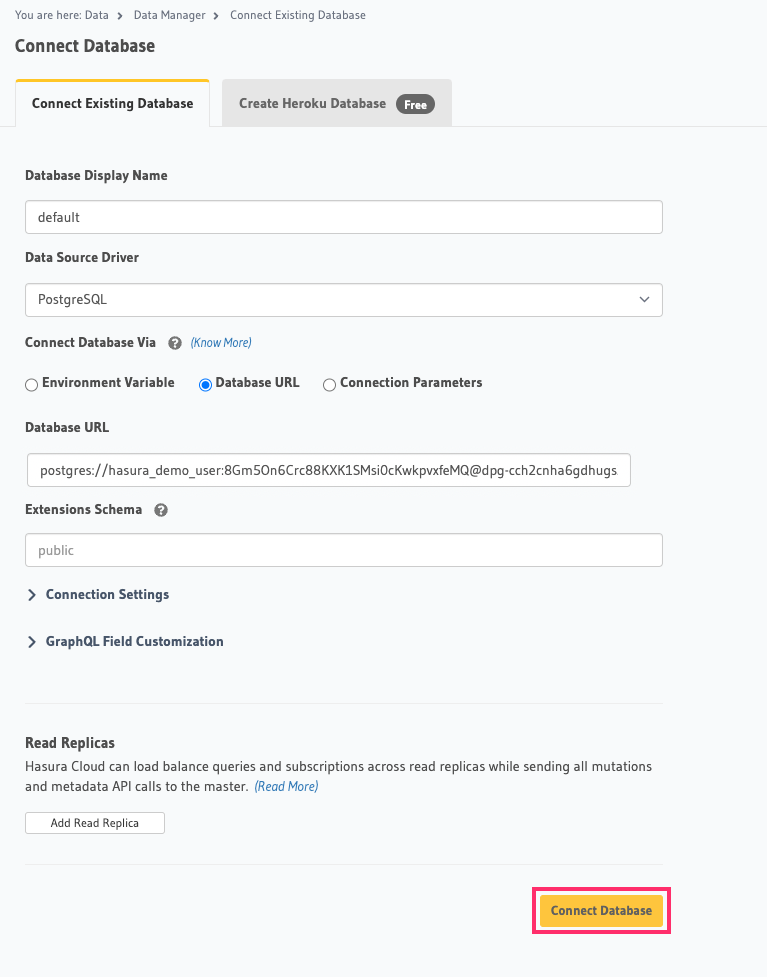
Then click Connect Database.
For security reasons, it is recommended to set database URLs as env vars and using the env vars to connect to the databases in place of the raw database URLs.
Voilà. You are ready to start developing.
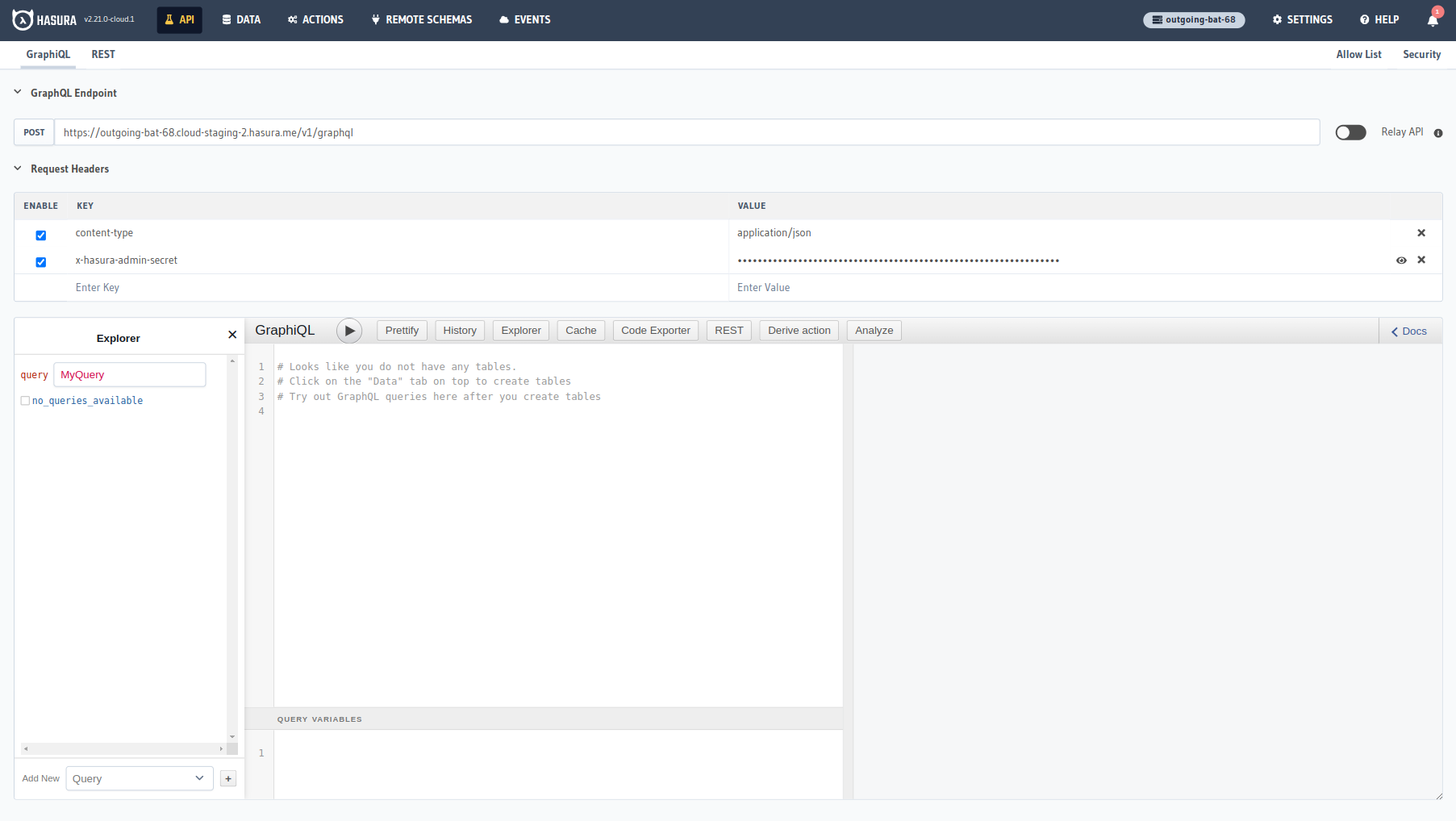
Next steps
You can check out our 30-Minute Hasura Basics Course and other GraphQL & Hasura Courses for a more detailed introduction to Hasura.
If using Hasura Cloud, you can also click the gear icon to manage your Hasura Cloud project. (e.g. add collaborators, env vars or custom domains).

For more information on which Postgres features we support, check out this page.